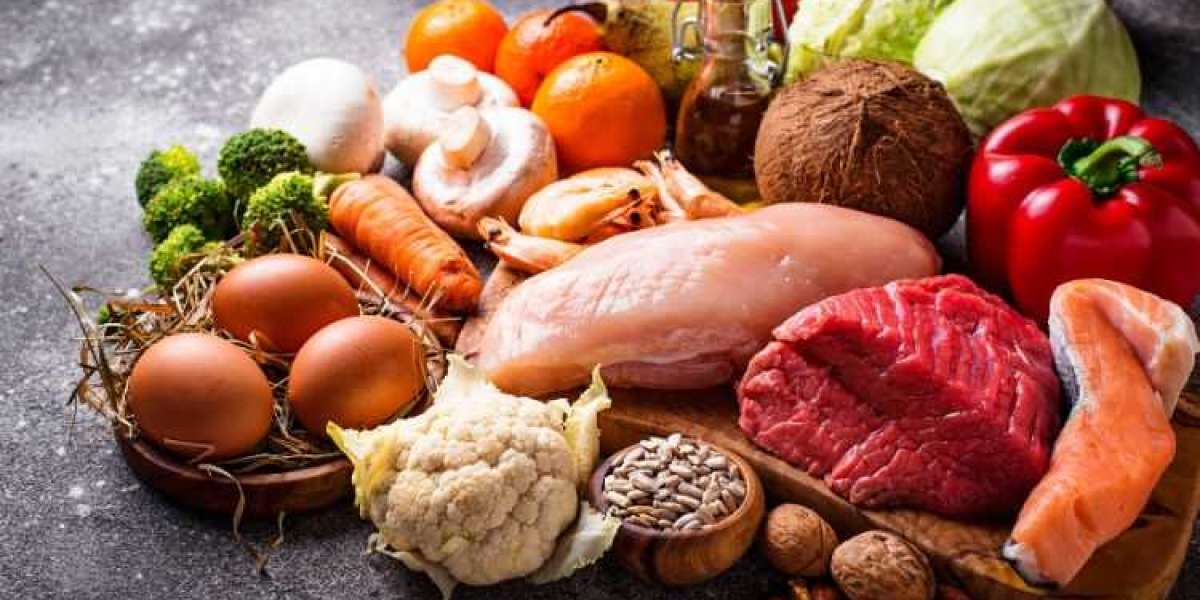The global Paleo Food Market Size, valued at approximately USD 11.11 billion in 2023, is on a growth trajectory, with projections indicating an expansion to around USD 19.25 billion by 2032. This growth represents a robust compound annual growth rate (CAGR) of 6.3% between 2024 and 2032. The Paleo diet, which emphasizes the consumption of foods presumed to have been available to humans during the Paleolithic era, continues to gain traction among health-conscious consumers. This diet includes lean meats, fish, fruits, vegetables, nuts, and seeds while excluding processed foods, dairy, grains, and legumes.
Key Benefits
Nutritional Value: Paleo foods are rich in nutrients, as they focus on whole, unprocessed ingredients. This diet provides high levels of protein, healthy fats, vitamins, and minerals.
Weight Management: The Paleo diet is associated with weight loss and management due to its emphasis on lean proteins and low-carb vegetables, which can lead to reduced calorie intake and improved metabolism.
Improved Digestion: Excluding grains and legumes can improve digestive health for some individuals by reducing inflammation and gastrointestinal discomfort.
Enhanced Energy Levels: Consumers often report increased energy levels due to the balanced intake of nutrients and reduced consumption of processed sugars and unhealthy fats.
Market Segmentation
By Product Type
- Packaged Foods: Includes Paleo snacks, bars, and ready-to-eat meals.
- Fresh Produce: Fresh fruits, vegetables, and meat products.
- Supplements: Paleo-specific vitamins and dietary supplements.
By Distribution Channel
- Supermarkets and Hypermarkets: Major retail outlets offering a variety of Paleo products.
- Specialty Stores: Stores dedicated to organic and health-focused products.
- Online Retail: E-commerce platforms that provide convenience and a wide range of options.
By Region
- North America: Includes the United States and Canada.
- Europe: Encompasses the United Kingdom, Germany, France, and other European nations.
- Asia-Pacific: Covers China, Japan, India, and other countries in the region.
- Latin America: Includes Brazil, Mexico, and other Latin American nations.
- Middle East Africa: Encompasses the regions of the Middle East and Africa.
Driving Factors
Health Awareness: Increasing awareness of the health benefits associated with the Paleo diet is driving demand. Consumers are becoming more conscious of their dietary choices and are seeking out nutritious, unprocessed foods.
Rising Incidence of Chronic Diseases: With the growing prevalence of obesity, diabetes, and cardiovascular diseases, many individuals are turning to Paleo diets as a preventative measure or to manage their conditions.
Increased Focus on Clean Eating: There is a rising trend towards clean eating and natural foods, which aligns with the principles of the Paleo diet.
Innovations in Product Offerings: Companies are expanding their Paleo food product lines to include a variety of options, from snacks to meal replacements, which makes the diet more accessible and convenient.
COVID-19 Impact
The COVID-19 pandemic had a mixed impact on the Paleo food market. On one hand, the pandemic heightened health concerns and led to increased interest in diets that support immune health and overall wellness. On the other hand, supply chain disruptions and economic uncertainties affected the availability and affordability of Paleo products. However, as the world recovers and consumers return to regular purchasing patterns, the market is expected to rebound strongly.
Restraining Factors
High Cost of Paleo Foods: Paleo foods can be more expensive compared to processed alternatives due to the cost of sourcing high-quality ingredients. This price premium can be a barrier for some consumers.
Limited Product Availability: In certain regions, there is a lack of availability of Paleo-specific products, which can hinder market growth.
Consumer Resistance: Some individuals may find it challenging to adhere to the strict dietary restrictions of the Paleo diet, which can limit market penetration.
Trends
Growth of Online Retail: The shift towards online shopping continues to grow, with more consumers purchasing Paleo products through e-commerce platforms for convenience and variety.
Expansion of Product Lines: Companies are innovating by developing new Paleo-friendly products, including snacks, meal kits, and beverages, to cater to evolving consumer preferences.
Sustainability: There is a growing emphasis on sustainable and ethically sourced ingredients within the Paleo food sector, aligning with broader consumer values regarding environmental impact.
Industry Segmentation
- Regional Insights
- North America: The largest market for Paleo foods due to high consumer awareness and availability of a wide range of products. The United States, in particular, shows strong growth potential.
- Europe: Growing interest in health and wellness trends is driving the market. Countries like the UK and Germany are seeing increased adoption of Paleo diets.
- Asia-Pacific: Emerging market with rising health consciousness and increasing disposable income, driving demand for Paleo foods.
- Latin America and Middle East Africa: Although smaller markets, these regions are gradually adopting Paleo diets, driven by increasing awareness and availability of products.
Top Impacting Factors
- Health Trends: Growing consumer interest in diets that promote health and wellness.
- Product Innovation: Introduction of new and diverse Paleo food products.
- Economic Conditions: Economic fluctuations affecting consumer spending on premium food products.
- Regulatory Environment: Changes in food labeling and health regulations impacting market dynamics.
Opportunities
- Product Diversification: There is an opportunity for companies to expand their product lines to include more diverse Paleo options, such as ready-to-eat meals and beverages.
- Emerging Markets: Growth potential in emerging markets where health trends are beginning to take root.
- Strategic Partnerships: Collaborations with health and wellness influencers or brands to promote Paleo products and reach a broader audience.
Challenges
- Market Saturation: Increasing competition in the Paleo food market may lead to market saturation and price pressures.
- Consumer Education: Educating consumers about the benefits and principles of the Paleo diet can be challenging but is essential for market growth.
Scope
The Paleo food market encompasses a broad range of products and consumer segments, from packaged foods and supplements to fresh produce. The market's growth is driven by increasing health awareness, innovations in product offerings, and rising consumer interest in natural and unprocessed foods. Despite challenges such as high costs and limited availability, the market presents significant opportunities for growth, particularly in emerging regions and through product diversification.

![Vigora XL Male Enhancement Reviews [2025]: Price For Sale](https://newcastleunitedfansclub.com/upload/photos/2024/11/YXKpYESV2qdYdVBimysV_05_1afc30971fd1f7a66e0c9760553890a0_image.jpg)

